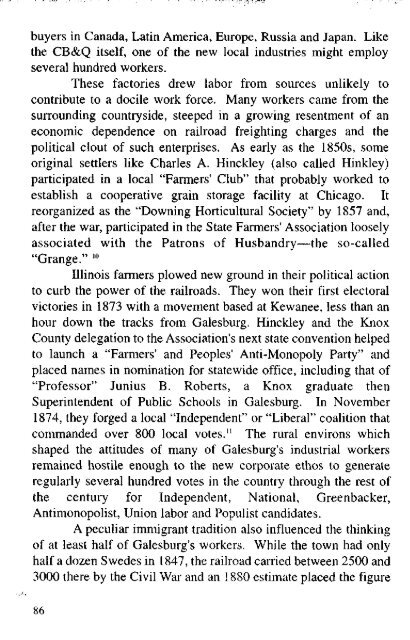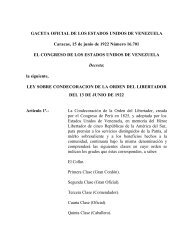"The Cruel Striker War" - NIU Digital Projects
"The Cruel Striker War" - NIU Digital Projects
"The Cruel Striker War" - NIU Digital Projects
You also want an ePaper? Increase the reach of your titles
YUMPU automatically turns print PDFs into web optimized ePapers that Google loves.
uyers in Canada, Latin America, Europe, Russia and Japan. Like<br />
the CB&Q itself, one of the new local industries might employ<br />
several hundred workers.<br />
<strong>The</strong>se factories drew labor from sources unlikely to<br />
contribute to a docile work force. Many workers came from the<br />
surrounding countryside, steeped in a growing resentment of an<br />
economic dependence on railroad freighting charges and the<br />
political clout of such enterprises. As early as the 1850s, some<br />
original settlers like Charles A. Hinckley (also called Hinkley)<br />
participated in a local "Farmers' Club" that probably worked to<br />
establish a cooperative grain storage facility at Chicago. It<br />
reorganized as the "Downing Horticultural Society" by 1857 and,<br />
after the war, participated in the State Farmers' Association loosely<br />
associated with the Patrons of Husbandry—the so-called<br />
"Grange." 10<br />
Illinois farmers plowed new ground in their political action<br />
to curb the power of the railroads. <strong>The</strong>y won their first electoral<br />
victories in 1873 with a movement based at Kewanee, less than an<br />
hour down the tracks from Galesburg. Hinckley and the Knox<br />
County delegation to the Association's next state convention helped<br />
to launch a "Farmers' and Peoples' Anti-Monopoly Party" and<br />
placed names in nomination for statewide office, including that of<br />
"Professor" Junius B. Roberts, a Knox graduate then<br />
Superintendent of Public Schools in Galesburg. In November<br />
1874, they forged a local "Independent" or "Liberal" coalition that<br />
commanded over 800 local votes. 11 <strong>The</strong> rural environs which<br />
shaped the attitudes of many of Galesburg's industrial workers<br />
remained hostile enough to the new corporate ethos to generate<br />
regularly several hundred votes in the country through the rest of<br />
the century for Independent, National, Greenbacker,<br />
Antimonopolist, Union labor and Populist candidates.<br />
A peculiar immigrant tradition also influenced the thinking<br />
of at least half of Galesburg's workers. While the town had only<br />
half a dozen Swedes in 1847, the railroad carried between 2500 and<br />
3000 there by the Civil War and an 1880 estimate placed the figure<br />
86

















